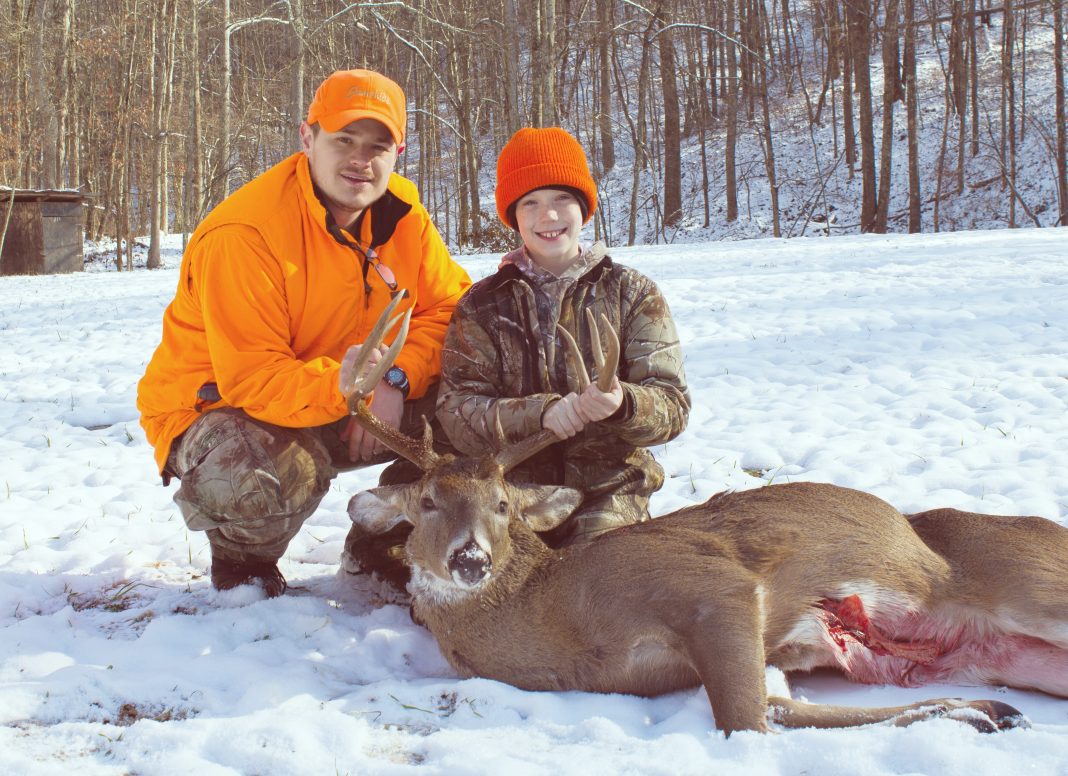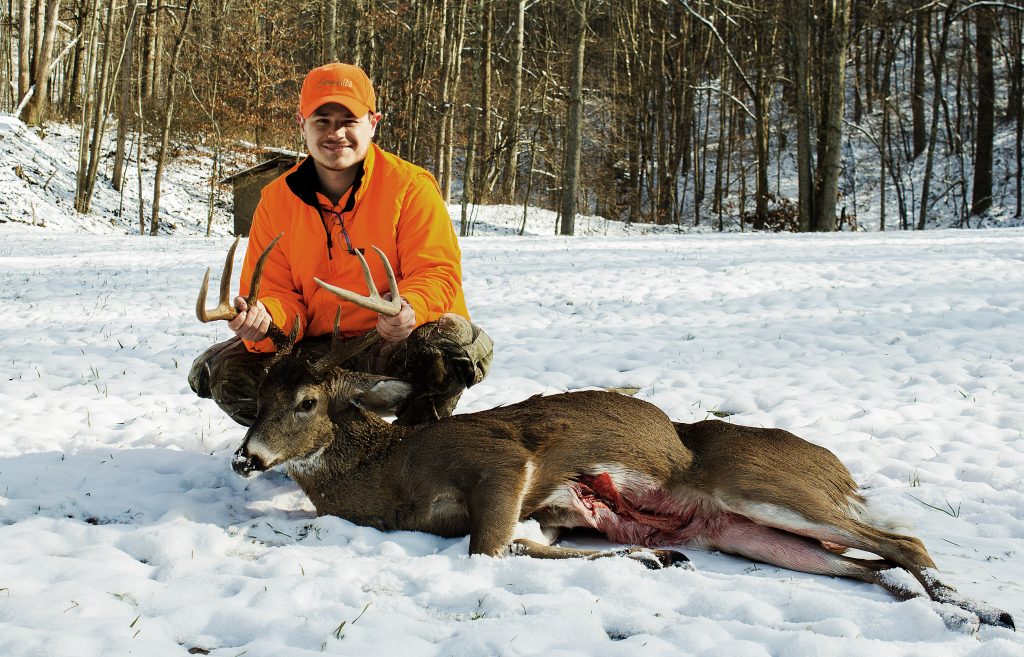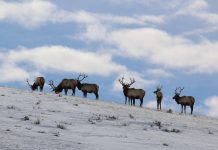This article was submitted by one of our supporters and fans. Justin is an awesome photographer and a successful hunter. The following is a story of West Virginia whitetail success.
The Setting
Although I primarily hunt in Montana now, I grew up in West Virginia. And the week of Thanksgiving in West Virginia is synonymous with “hunting.” Our family tradition for many years was to get together for a week of deer hunting, a tradition that started initially at my uncle’s house, then later migrated to a cabin that we built for that purpose. Each season, we would get together for good-natured comradery, too much good food, lots of hiking, and hunting. The quiet West Virginia mountains are the perfect setting for a peaceful whitetail hunt. The state promises lots of does and, with a little luck and a lot of hard work, some nice bucks.
This upcoming fall (2023) will make ten years since I harvested my biggest whitetail buck. By eastern nomenclature, he’s an eight-point (Montanans would call him a four-point), and he’s a respectable buck even by western standards (even out here, I’ve yet to meet someone who looked at the mount and claimed they would not have shot him). This particular buck was the end result of years of waiting, hunting, and conservation.
When we first began hunting our piece of property in West Virginia that was purchased by my father in the late 1990s, we discovered an overabundance of whitetail does, which meant very few bucks. The bucks that we did see were spikes or raghorns, but rarely (if ever) any mature bucks. Over several, we worked at reducing this ratio by thinning out the does (not much eats better than whitetail doe.) As a result, we finally started to see some decent, mature bucks (including a nice nine-point harvested by my oldest brother in 2008). By 2013, our family had finally taken a few bucks of merit.
Rumors
By the fall of 2013, a natural gas company had moved into the region and purchased both land and gas rights. In due course, we began to talk with the employees in the area. Many of them were hunters themselves. Although they were not allowed to carry firearms while on the clock. Through these frequent conversations, specifically with the employees that controlled trucks and traffic in the area, we began to hear rumors of big whitetail bucks. That year, the natural gas employees had been watching a twelve-point, an eleven-point, and a large eight-point, and although the first two had more points, the last one had the most mass. Given the chance, however, who would pass up any of the three?
Having already harvested a whitetail doe earlier in the week, I opted to go out into the fresh, light snow on Friday morning of the week of Thanksgiving in 2013. I began working my way up the mountain. I still hunted down a bench that is situated not far below the ridgeline. Suddenly, the antlers of a bedded buck appeared in front of me at about 50 or 75 yards. However, mature bucks do not become mature bucks by being stupid. Hardly had I spotted his antlers than he was up and running directly away from me, which left me with no ethical shot.
Getting Another Chance
Frustrated with this turn of events and fearing that I’d missed my one opportunity, I decided to continue down the bench just in case. Taking my time and continuing to still hunt, I finally spotted a deer across the gully at about 170 yards or so. Knowing that it was one of the bucks, I was not sure which one. I braced myself against a close-by tree, took aim with my Remington 30.06, and squeezed the trigger. This was not an easy thing to do when the biggest buck of your hunting career is standing broadside at 170 yards. He dropped immediately, then rolled down the steep slope into the creek bottom below.
There is an innate excitement that comes along with approaching a downed buck of a lifetime which is easily remembered years later. Crossing the rest of the bench, then trudging down to the creek bottom. Soon I finally approached the buck and realized that he was the eight-point that we’d been told about. I tagged him, field-dressed him, and left him long enough to get help retrieving him (my nephew, Jacob, ended up helping drag the buck out of the woods and across the field to my truck).
West Virginia Whitetail Success
The excitement did not end upon getting the buck back to camp, of course. Everyone in our camp was extremely excited by the buck. Placing him in the front yard of our cabin brought some amusing attention as well, though. The first gas company truck to drive by slammed on its brakes. The driver immediately got on his radio to tell all his buddies that the buck was down. Not long after that, the employee who had initially told me about the buck came driving up, jumped out of his truck, and said, “I had to come and see which one it was!”
It has been almost 13 years since this buck was harvested. Since then I’ve not only moved to Montana, but I’ve also taken elk, pronghorn, and mule deer. That being said, this buck remains one of my favorites and he is still my biggest whitetail buck. There is still an excitement that still remains when looking at his mount. So, it is easy to count this as a 2013 whitetail success!
You can read more articles by Justin by clicking here. Likewise, you can read more about whitetail hunting by clicking here. You can check out more West Virginia hunting by clicking here.
















